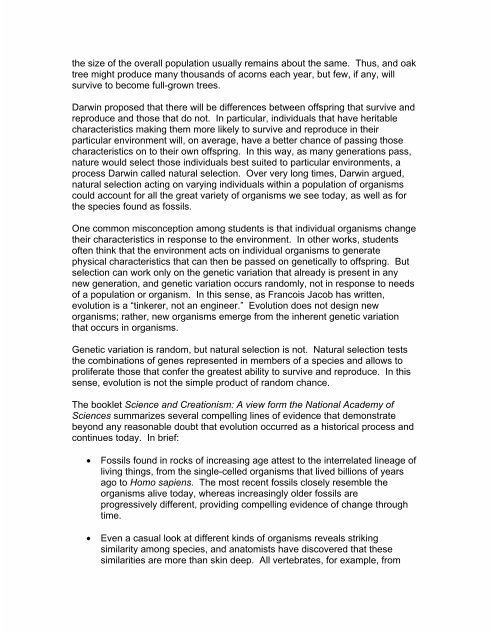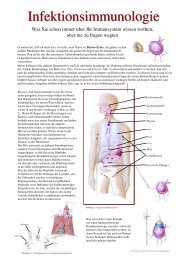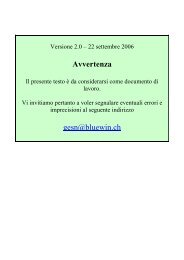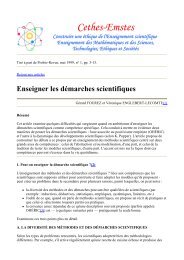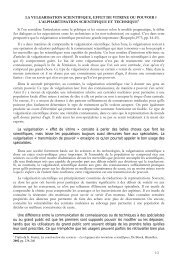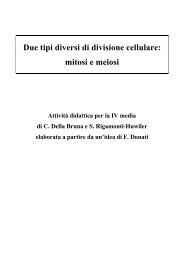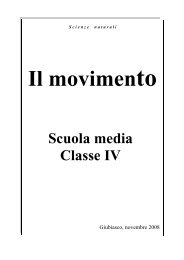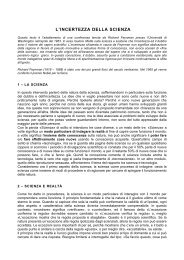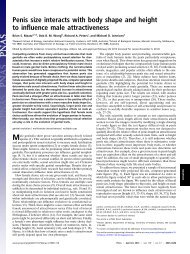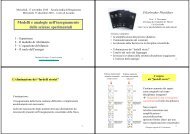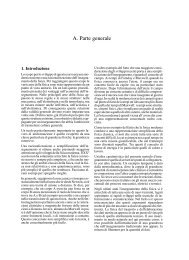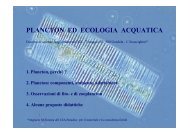Canon Paleontology Curriculum Unit 3
Canon Paleontology Curriculum Unit 3
Canon Paleontology Curriculum Unit 3
Create successful ePaper yourself
Turn your PDF publications into a flip-book with our unique Google optimized e-Paper software.
the size of the overall population usually remains about the same. Thus, and oak<br />
tree might produce many thousands of acorns each year, but few, if any, will<br />
survive to become full-grown trees.<br />
Darwin proposed that there will be differences between offspring that survive and<br />
reproduce and those that do not. In particular, individuals that have heritable<br />
characteristics making them more likely to survive and reproduce in their<br />
particular environment will, on average, have a better chance of passing those<br />
characteristics on to their own offspring. In this way, as many generations pass,<br />
nature would select those individuals best suited to particular environments, a<br />
process Darwin called natural selection. Over very long times, Darwin argued,<br />
natural selection acting on varying individuals within a population of organisms<br />
could account for all the great variety of organisms we see today, as well as for<br />
the species found as fossils.<br />
One common misconception among students is that individual organisms change<br />
their characteristics in response to the environment. In other works, students<br />
often think that the environment acts on individual organisms to generate<br />
physical characteristics that can then be passed on genetically to offspring. But<br />
selection can work only on the genetic variation that already is present in any<br />
new generation, and genetic variation occurs randomly, not in response to needs<br />
of a population or organism. In this sense, as Francois Jacob has written,<br />
evolution is a “tinkerer, not an engineer.” Evolution does not design new<br />
organisms; rather, new organisms emerge from the inherent genetic variation<br />
that occurs in organisms.<br />
Genetic variation is random, but natural selection is not. Natural selection tests<br />
the combinations of genes represented in members of a species and allows to<br />
proliferate those that confer the greatest ability to survive and reproduce. In this<br />
sense, evolution is not the simple product of random chance.<br />
The booklet Science and Creationism: A view form the National Academy of<br />
Sciences summarizes several compelling lines of evidence that demonstrate<br />
beyond any reasonable doubt that evolution occurred as a historical process and<br />
continues today. In brief:<br />
• Fossils found in rocks of increasing age attest to the interrelated lineage of<br />
living things, from the single-celled organisms that lived billions of years<br />
ago to Homo sapiens. The most recent fossils closely resemble the<br />
organisms alive today, whereas increasingly older fossils are<br />
progressively different, providing compelling evidence of change through<br />
time.<br />
• Even a casual look at different kinds of organisms reveals striking<br />
similarity among species, and anatomists have discovered that these<br />
similarities are more than skin deep. All vertebrates, for example, from


